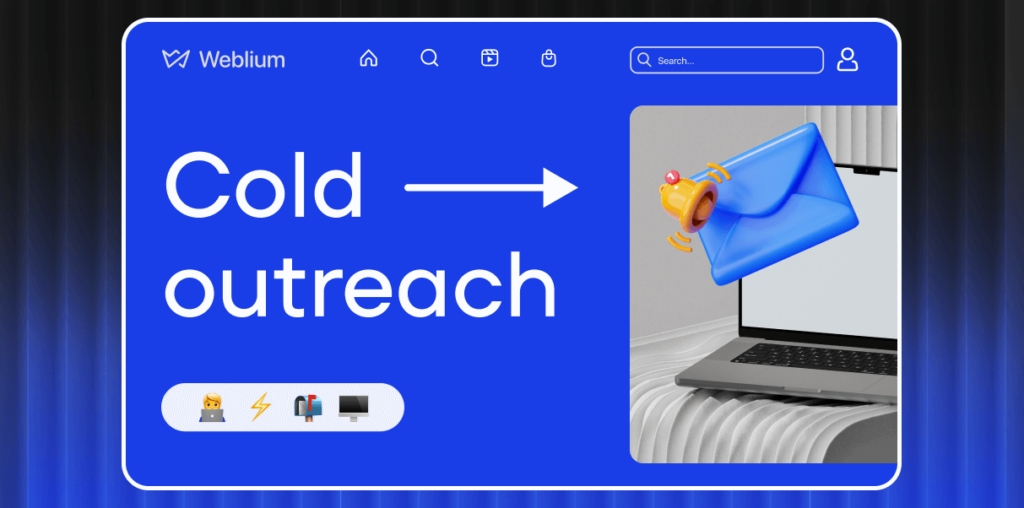Ready to get started?
1. How do you define your targets?
First things first, you need to know who you’re reaching out to.
Define your ideal client by considering factors like industry, company size, job titles, and specific needs your service can address. This helps narrow down your focus and ensures you’re reaching out to the right people who are most likely to benefit from your services.
2. How do you understand your target audience?
Next, get to know your target audience. Dive deep into their pain points, challenges, and goals.
What keeps them up at night? What solutions are they currently using? Understanding these aspects allows you to tailor your outreach in a way that resonates with them. Check out industry forums, social media discussions, and reviews to gather insights.
Don’t know where to start—use AI tools like AI SDR by Reply.io, which can help you work out the ideal customer profile in a few seconds.
3. How do you build a list of potential clients?
Once you know who you’re targeting and what they need, it’s time to build your list. Use tools like LinkedIn Sales Navigator, Reply Data, industry directories, and even good old Google searches to compile a list of potential clients.
But make sure to include relevant contact information, like email addresses and LinkedIn profiles, to make your outreach easier.
4. How do you craft a compelling message?
Now comes the fun part—crafting your message.
Your outreach needs to be personalized and value-driven, including your USP. Start with a strong subject line that grabs attention. In the body, briefly introduce yourself and your agency, explain why you’re reaching out, and highlight how you can solve their specific problems.
Keep it concise and end with a clear call to action, like scheduling a call or a meeting.
5. Which channels should you choose for outreach?
Choosing the right channels is crucial. Email is a classic and effective choice for cold outreach, but don’t ignore other channels like LinkedIn, Whatsapp, or even direct cold calls, depending on your target audience.
A multi-channel approach can increase your chances of getting noticed.
6. What tools should you use for cold outreach?
Finally, equip yourself with the right tools. Sales engagement tools like Reply can help manage and scale your outreach efforts. LinkedIn tools like Sales Navigator are great for building and engaging with your list.
CRM systems like HubSpot or Pipedrive (or even built-in CRM in Weblium) can keep track of your interactions and follow-ups, ensuring no potential client falls through the cracks. And don’t forget, your potential customers want to know more about you. Building a website on Weblium is really easy and fast. It’s a great way to showcase your story and convince them to book a meeting (.
How do you track your results?
Alright, you’ve started your cold outreach. Now, how do you make sure it’s working? Tracking your results is key to understanding what’s effective and what needs tweaking.
First, set clear goals. Whether it’s booking meetings, achieving a specific response rate, or converting leads into clients, having clear goals helps measure success effectively.
It’s simple—just use a CRM. These tools track every interaction, follow-up, and response in one place, ensuring you never lose track of your leads.
Focus on key metrics: open rates, response rates, and conversion rates.
Open rates show if your subject lines are working, response rates indicate if your message resonates, and conversion rates reveal how many leads become clients.
Qualitative feedback is equally important. Pay attention to responses to understand potential clients’ thoughts and concerns, refining your message accordingly.
A/B testing different subject lines, email formats, and messaging styles helps optimize your outreach. Regularly review performance data to spot patterns and trends, such as the best times to send emails or the most responsive industries.
Stay flexible and ready to adapt based on the data. Tracking results might seem daunting, but it ensures your cold outreach efforts are effective, helping you achieve better results over time.
How do you build a scalable process?
Building a scalable process for cold outreach ensures you can handle growth without sacrificing quality. Here’s how to do it.
First, standardize your workflow. Create templates (or use AI email generators to ease the process) for your emails and follow-ups that can be easily customized.
This saves time and maintains consistency.
Next, use automation tools. Platforms like Reply with its AI SDR allow you to automate email sequences and follow-ups. This way, you can reach more people without increasing your workload.

